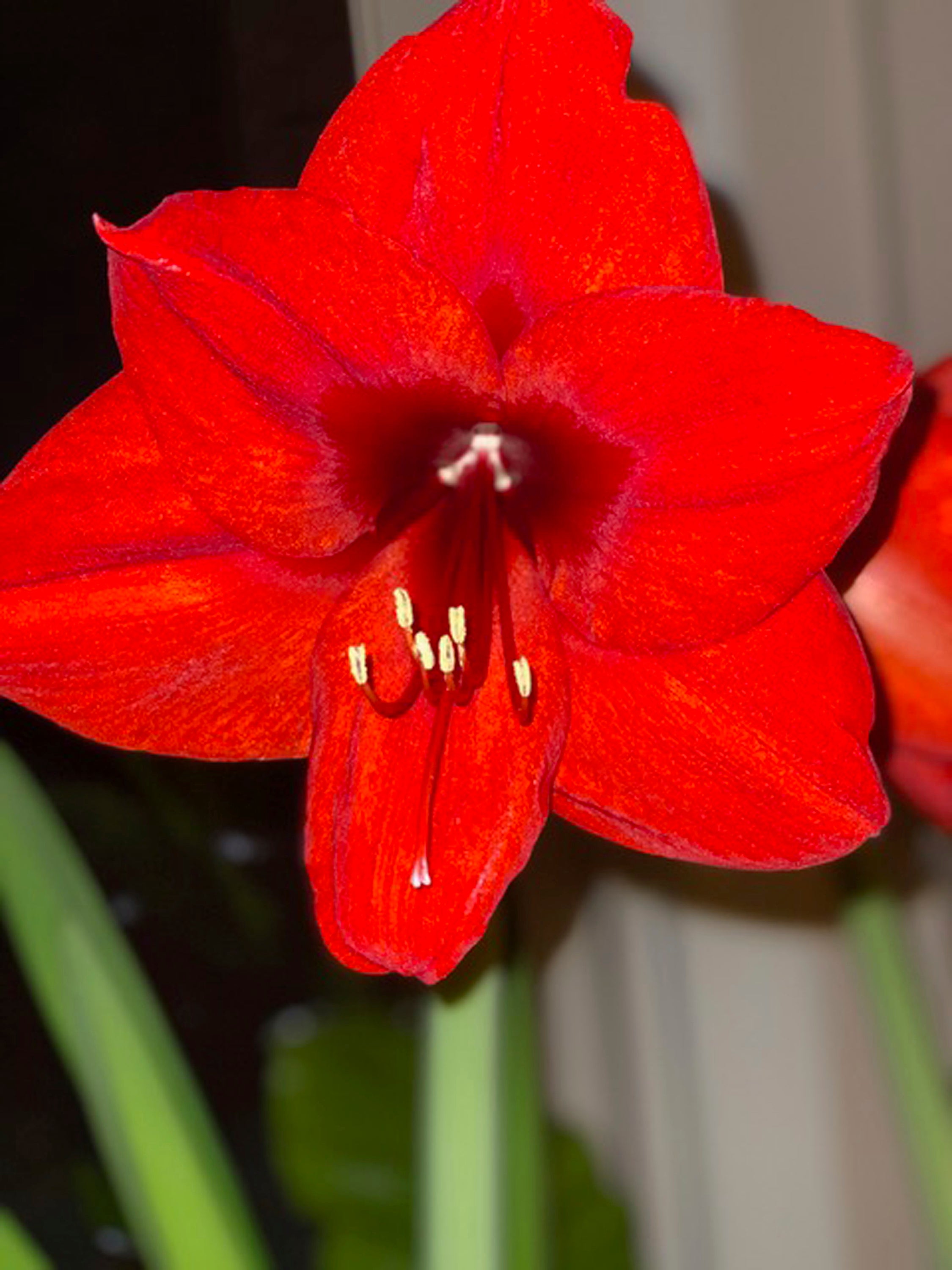Showy amaryllis makes a perfect Valentine's plant or gift
Easter has lilies

Easter has lilies. Thanksgiving has gourds. Christmas has poinsettias. And Valentine’s Day should have amaryllis.
For the uninitiated, amaryllises are big bulbs that can produce among the biggest and showiest flowers a gardener can grow indoors (maybe outdoors too). Best of all, water and a bit of light is all it takes to coax these bulbs into producing their huge flowers, 6 to 8 inches across.
Impressive is one word for them. Easy would be another. Amaryllises are “just add water and stand back” plants; they don't require any skill to grow successfully.
FROM BULB TO FLOWERS
The bulbs usually start appearing on store shelves around the December holidays, just when they are coming out of dormancy. They grow throughout this period, sometimes even while in their packaging. They first show a bit of green shoot at the top of the bulb. It takes about 6 weeks for this shoot to elongate and produce two to four gigantic flowers.
While amaryllis bulbs are great Christmas stocking stuffers, the flowers themselves appear around Valentine’s Day. And while there are several different species with blooms of varying colors (pinks, whites and combinations), most specimens — as luck would have it for Saint Valentine — are that holiday's color, vibrant red.
Many of the bulbs are sold already potted up in soil. If not, use well draining potting soil, rich in organics, and a 6-to-8-inch pot that allows for an inch or two of soil between the bulb and the pot’s rim. A heavy pot is recommended since the average amaryllis stalk can reach 2½ to 3 feet tall and will tip over a light container if not supported.
If you have to plant your own bulb, place it so approximately one-third of it is above the soil line. Water well once, and after that keep the soil just slightly moist. Leaves and at least one flower stalk will quickly develop. Usually the flower stalk appears first. You can distinguish it from the developing leaves by the characteristic notch in its tip.
Once watered, you can almost see the amaryllis plants growing. If you are lucky, your bulb will produce more than one shoot. Either way, enjoy the display.
HELP YOUR PLANT REBLOOM NEXT YEAR
Once the flowers fade, carefully cut them off. The stalk will die next and this, too, should be removed. The leaves, however, should be left undisturbed, and the plant should be allowed to grow all spring and summer.
Some gardeners put theirs outside for the season. An application or two of an organic fertilizer will help encourage more leaf growth which, in turn, strengthens the bulb so it will produce again next year. In mid-August or so, withhold water and put the plant in a dark, cool location for at least eight weeks; it will stop growing and go dormant. After this treatment, you can bring the plant out into the light, water it and stand back again.
Because these are the most impressive flowers you can grow indoors, buy as many as you can when you come upon amaryllis bulbs for sale. Most are under $15, pot and all. Do so and you will enjoy Valentines for years to come.
—-
Jeff Lowenfels writes regularly about gardening. His books include “Teaming With Microbes,” “Teaming With Fungi” and “Teaming With Nutrients.” He can be reached at jeff@gardener.com.